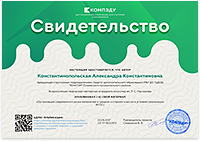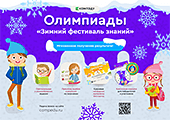Тема: “The Land Down Under”
Тип: урок комплексного применения знаний
Образовательная цель: формирование навыков говорения
Сопутствующая задача: совершенствование навыков восприятия и понимания речи на слух
Прогнозируемый результат: предполагается, что к концу урока учащиеся смогут рассказать об Австралии, составить паспорт страны и сравнить особенности Австралии со своей страной
Развивающая цель: способствовать развитию основных видов мыслительной деятельности (анализ, синтез, сравнение, обобщение)
Воспитательная цель: воспитывать интерес к знакомству с разными странами, уважительное отношение к другим народам
Оборудование: ТСО, раздаточный материал, новая лексика на доске, достопримечательности Австралии, карты Австралии и Беларуси
Ход урока
I Организационно-мотивационный
Hi how are you? Hope you are fine and are ready for the travelling. Are you? Have you travelled far away? What place did you go to? Who did you go with? What means of transport did you go by?
Did you enjoy it? Why do you think many people enjoy travelling? Is it useful to learn more about the country you are going to visit beforehand? So I hope our travelling today will be very useful for you or your friends one day. Why don’t you ask me what country we are going to travel? I’d like you to guess it after looking through some pictures and guess the country they belong to. (watching some video files). Right you are we are going to Australia the land which is also called The Land Down Under. The aim of our lesson is to broaden our knowledge about this state, to learn some new information, by the end of the lesson you are expected to be able to speak about this country and compare it with Belarus.
II Операционно-деятельностный
1 Work with handouts
I’d like to start the lesson with the revising some new words connected with our topic
Exercise 1 You are to match the words with their definitions.
Exercise 2 Complete the sentences with the new words
Well done
2 Listening
Before watching the video I’d like you to answer my questions
How do you think when Australian people celebrate New Yea: summer or winter?
Which month do you consider to be the middle of winter?
Do you know who is the head of the country?
Who are the native Australians and where the come from?
Now let’s listen and check up your guesses
(watching the video)
Could you agree or disagree with the following statement. If you disagree, please, correct:
1 There are 2 states and 6 territories in Australia.
2 The head of the state is Queen Elizabeth II represented by the general-governor.
3 Canberra is the capital and the Largest city of the state.
4 The climate is tropical in the South and mild in the North with cool winters and warm summers. The country is not popular with the tourists as the wildlife is very boring/
5 The Southern Cross can be seen in Great Britain as well.
6 The country is washed by the Atlantic and the Pacific oceans.
7 The first European settlers were British criminals.
8 Australia is the most mountainous and wettest continent.
9 2/3 of the country is covered by deserts.
10 The most populated parts of Australia are Eastern and Southern coasts.
Now let’s watch the video one more time to find out more details. Be ready to answer my questions Here I have some cards and you are to choose any and answer the question (children answer the questions)
What is the official name of Australia?
Why is it also called “The land Down Under”?
What area does Australia cover?
What oceans is it washed by?
Who were the first Australian inhabitants?
When did Aboriginal people settle in Australia?
Who were the first European people to arrive in Australia? Did they settle in Australia?
When did James Cook discover Australia?
Who were the first European people to settle in Australia?
When does Australia celebrate its Australian National Day?
Who is the head of the continent? Who rules the country in fact?
What is the population of Australia?
Which parts of Australia are mostly populated?
Where do Aborigines live at present?
Why is Uluru considered to be a holy place?
What is the capital of Australia? (Do you know what it means in the Aboriginal)
Why can we see the British Union Jack in the upper corner of the Australian Flag?
Why do we see the Southern Cross on the flag?
What sights should we see in Australia?
What are the biggest cities of Australia?
Why is Australia the flattest and driest continent?
What are Australian forests made up of?
What tree is the symbol of Australia?
What animals and birds can we meet in Australia?
Well done
3 Relaxing minute (exercises for eyes)
III Контрольно-оценочный этап
4 Speaking Thanks a lot for your answers. We have spoken a lot about Australia and its people and now are approaching to the main aim of our lesson speaking about this interesting continent but first I’d like you to compare it with our own country Belarus. I’m going to give you some sheets and you are to make the passports of the 2 countries
|
| Australia | Belarus |
| Name |
|
|
| Area |
|
|
| Population |
|
|
| Climate |
|
|
| Discovering history |
|
|
| Wild life |
|
|
| Famous for |
|
|
| Parts |
|
|
| Other information |
|
|
Great. Could you exchange the sheets with your neighbor to check it? (children are making up sentences trying to give the information as full as possible)
Ok now I would like you to speak about Australia using the map. To help you I have prepared the plan you can use and there are words and expressions on the blackboard too.
The official name of Australia is ……………. The head of the country is ……………but in fact it is ruled by……………. It is the…………………continent and the ………………...island in the world which is washed by …………….and …………. oceans. It’s……………………times bigger than Britain. The continent is also called the Land Down Under because………………… The area of the country is……………………. sq. km with the population about …………………...ml people. There are ………...states and ………. territories in Australia. The largest cities are …………….………………………………………. The capital of the country is …………………. The most populated areas are ………………. because 2/3 of Australia is covered by …………………Australia has 3 different climates. In the North, the weather is tropical-hot and ………. In the center, the climate is very ……………. In the south, it’s mild with ………winters and …………. summers. The first inhabitants were …………. who came about 50 000-60 000 years ago. But after …………………had discovered the continent the first European settlement appeared in Australia which was mostly presented by British…………… The Aboriginal people were moved to live to ……………. areas around ………………. which is known as a landmark of Australia. Other sights we can see are……………. national park, Sydney …………., the Great…………Your impression about this country won’t be full if you don’t visit Australian forests where you can see………………… Welcome to Australia
(pupils’ speaking). Thanks a lot.
Our lesson is coming to the end.
Your home task will be to write your opinion about this country. If you would like to visit it and why
Your marks are ….
Reflection Could you please tell me your opinion about the lesson and feelings you have and why.
Thanks





